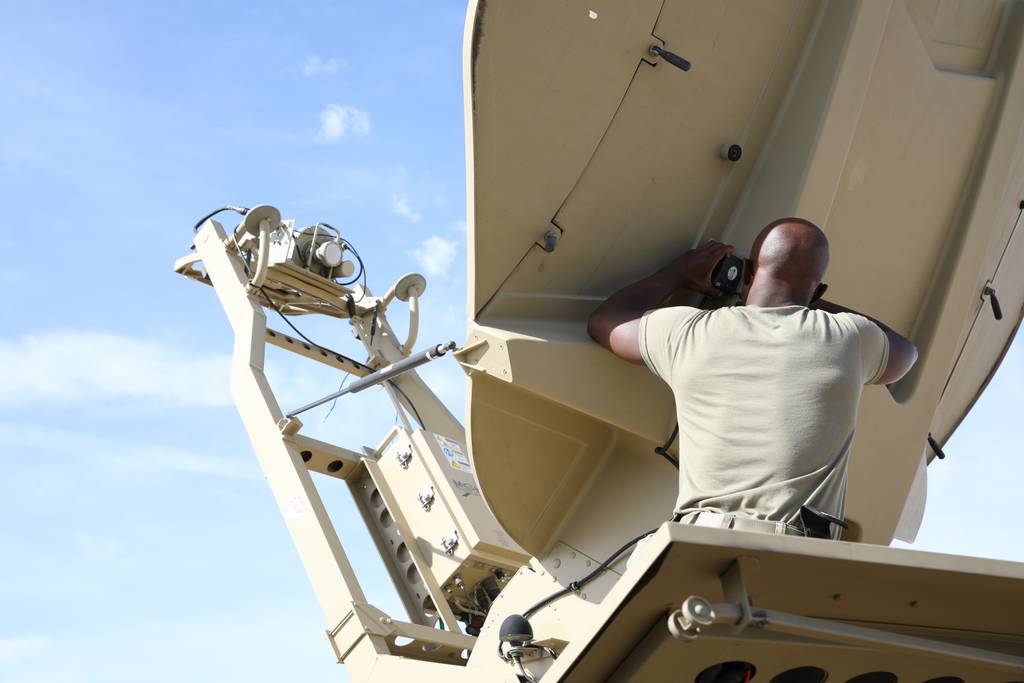WASHINGTON — How ally and partner systems are configured and interact is a critical consideration for those tasked with modernizing U.S. networks and improving the distribution of information across the battlefields of today and tomorrow, Army leaders said at the C4ISRNET Conference.
“We will never fight alone again,” Brig. Gen. Jeth Rey, the director of the Network Cross-Functional Team, said at the virtual conference April 20. “We will always fight with our coalition partners, so it’s important that we find a way to share data.”
A key test of information sharing and network interplay will come this year, with Project Convergence ‘22, where pieces of cutting-edge military tech will be evaluated in demanding conditions. Project Convergence is the Army’s contribution to the Pentagon’s broader Joint All-Domain Command and Control effort, which aims to better connect sensors to shooters and accelerate decision making with tailored responses to threats.
PC ‘22 is the first to include international forces, the United Kingdom and Australia among them. New Zealand could also participate, Defense News reported last month, and Canada will observe, with plans to take part at a later date.
This year’s Project Convergence will focus on both the Indo-Pacific and the European theaters, with an eye toward fighting at a larger scale. Data — and ensuring it gets to the right people — will be on the minds of many.
“When you look forward to PC ‘22, it’s not just the U.S. as a joint force. It’s our combined joint force,” Col. Tobin Magsig, a special assistant to the commander of Army Futures Command, said in a February conversation with the Center for Strategic and International Studies, a think tank. “So, taking our closest allies and partners, being able to pass data seamlessly, being able to have that trust in the data that we pass so that you know an Australian shooter might feel very comfortable off of a British sensor or a Canadian C2 network.”
Maj. Gen. Robert Collins, who heads the Program Executive Office for Command, Control and Communications-Tactical, or PEO C3T, on Wednesday emphasized that “our partners and allies are more critical than ever.” And that importance is driving a tremendous amount of engagement with them.
A key initiative moving forward, Collins said at the C4ISRNET Conference, is not only building relationships with other militaries and exchanging the requisite information and policies for cooperation, but also constructing a “persistent environment” in which modernization experiments and intel exchange can thrive.
“Traditionally, we’ve been very episodic,” Collins said. Now, he continued, “I think there’s a much more concerted effort, a much more persistent effort, to make sure we continue that partnership with our coalition allies.”
The blunt challenge posed by PC ‘22, Rey said, is “whether or not we can actually share that data with our partners across the board, and then put some steel on the targets. I think that’s going to be key.”
Failure in a controlled scenario, though, could prove useful.
“If we fail, the next day we’ll come back and we’ll find out if there is a configuration that needs to be changed or a policy for us to get after,” Rey said. “And over time, by the end of the experiment, hopefully we can then share the information as we thought we could.”
Colin Demarest was a reporter at C4ISRNET, where he covered military networks, cyber and IT. Colin had previously covered the Department of Energy and its National Nuclear Security Administration — namely Cold War cleanup and nuclear weapons development — for a daily newspaper in South Carolina. Colin is also an award-winning photographer.








